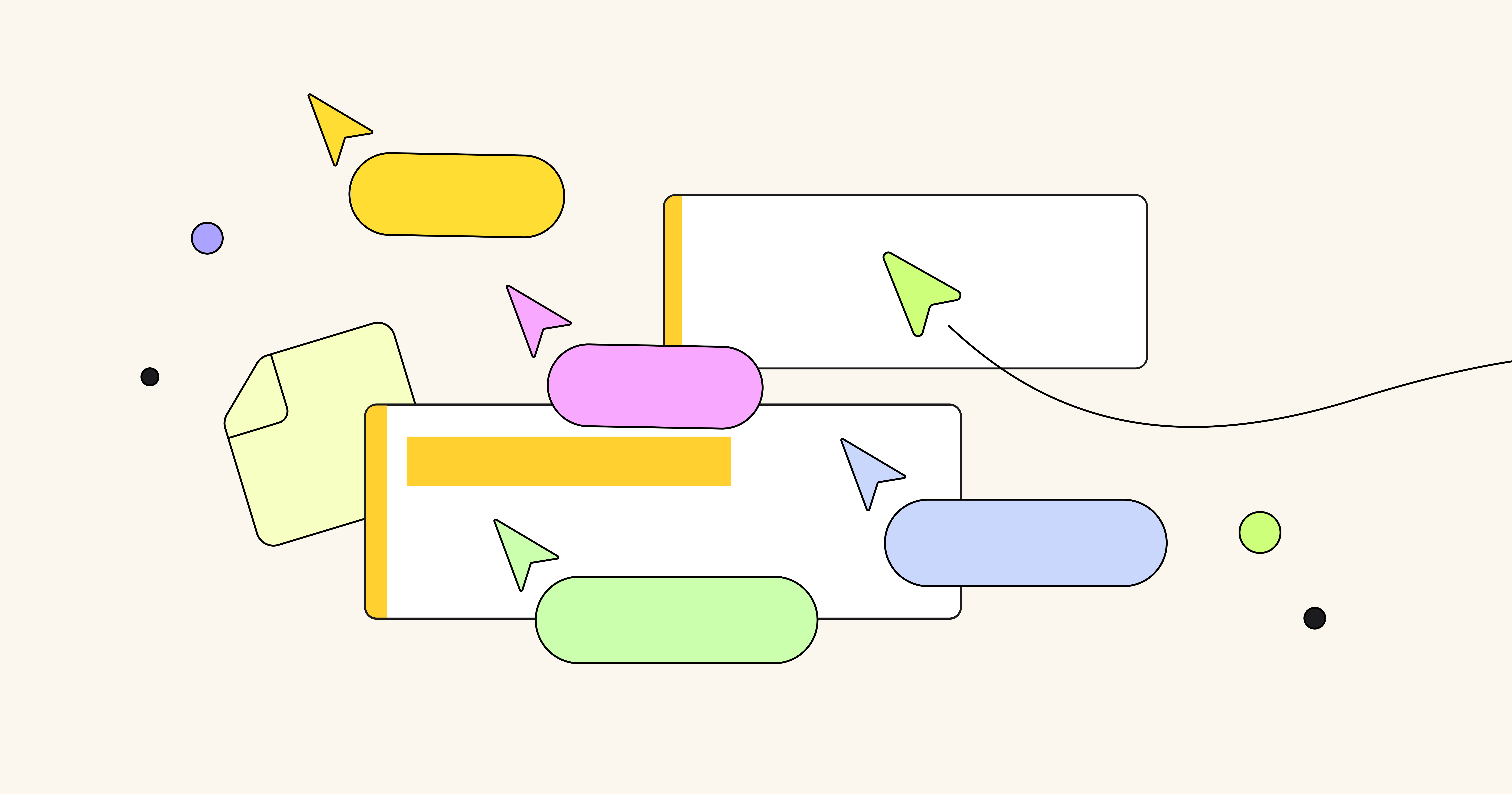Whether you call it program increment (PI) planning, quarterly planning for product teams, or even big room planning, the reality is the same: These sessions are complex undertakings, even more so in our current hybrid reality.
Every 8-12 weeks, dozens, hundreds, or — in some cases — thousands of product team members meet to align on a shared vision, pinpoint cross-team dependencies, discuss features, and, ultimately, plan their product roadmap.
PI or big room planning is designed to capitalize on the product teams’ collective brainpower and enthusiasm. But here’s the thing: In the modern working world, this planning is no longer happening in…well, one big room. Many organizations have had to adapt this formerly face-to-face ritual to accommodate distributed teams.
3 major pitfalls of distributed PI or big room planning
When product teams adapted these planning sessions for distributed ways of working at the outset of the pandemic, they became more accessible, convenient, and cost-effective. But the remote format introduced a few new hurdles, too.
1. Too much wasted time on duplicate, manual work
Ensuring that a quarterly planning session is as effective as possible requires a great deal of preparation, as well as organization post-meeting.
Beforehand, facilitators need to gather key information to understand each team’s capacity and estimate the story size, for example. In most cases, this requires tracking down product managers, product owners, and developers to get important details.
And even once they have all the necessary information in hand, there’s a lot of manual and tedious work involved in importing roadmaps from multiple sources and cleaning them up so that everybody’s working from a single source of truth for the product vision.
And the hard work isn’t over after the planning session either. Facilitators are then left to manually replicate the session’s decisions in their systems of record, like Jira or Azure DevOps. “We wasted 100 hours on manually checking [that] columns [and] rows were accurately reflected in Jira after the session,” explains Marc Luett, Director of Business Agility at Werner Enterprises, whom we interviewed.
All of this back-and-forth clicking, copying, and pasting not only wastes time and energy but also makes teams far more prone to human error.
2. Dependencies are harder to visualize
Projects are like rows of dominoes, and it’s crucial for teams to understand the relationships between all of the different epics, stories, features, tasks, and more. That’s why dependency mapping is one of the most crucial pieces of PI or big room planning — it uncovers those relationships and encourages teams to break down the silos between them.
And yet, it’s “time-consuming and frustrating for users to identify the dependency or use it to discuss with other teams,” Luett continues. Virtual connectors have replaced in-room strings, but dependency mapping has remained as messy in today’s distributed sessions as it was offline.
3. Lack of energy leads to a lack of engagement
PI or big room planning sessions are known for their big energy, but product teams are quickly learning that it’s difficult to capture that same collaborative and dynamic spirit in a virtual session.
“I miss the energy and fun of being in the same room,” Isaac, an Agile Coach told us in an interview. While he used to be an active participant in in-person planning, he prefers to observe and participate only when required now that these sessions are hybrid or fully remote.
The value of PI or big room planning comes from the energy and focus that its participants invest in it. You can’t risk having people back out because the sessions feel more like an obligation than an opportunity.
3 tips for putting the passion and productivity back in PI or big room planning
Anybody who’s ever attended a virtual happy hour will readily admit that it’s tough to replicate the same enthusiasm you feel when you’re together in the same room with other people. But remote work isn’t going anywhere. In fact, Miro’s “The Ways We Work” survey found that 32% of knowledge workers say their ideal work environment is remote and 56% say they prefer a hybrid environment; just 12% want to be fully in-office.
The truth is that distributed product planning sessions won’t be exactly the same as the in-person ones you used to host, but here are three tips for ensuring they’re just as effective.
1. Sync experiences across your tech stack
When it comes to virtual PI or big room planning, it’s almost impossible to overstate the importance of using the right tools. The right technology significantly reduces manual work, improves visibility and transparency, and enables more efficient communication and collaboration.
For example, with Miro’s Program Board, you can easily (seriously, it’s only two steps) import all of the epics, stories, and tasks you need from Jira. No more painful copying and pasting.
And rather than having to do a bunch of grunt work after the session, it is synced to your system of record and hence, updates it live. Edits made in Miro are synced immediately to Jira and any edits made in Jira are visible right away in Miro. No more duplicate records, missed entries, and crossed wires.
Teams can spend less time pulling in data and more time on what matters most: strategizing.
2. Clearly visualize connections between tasks
Identifying dependencies doesn’t need to result in a complex maze of arrows and lines. With Miro’s Dependencies app, you can map dependencies between Jira cards either directly on your Program board or anywhere on a Miro board during your real-time planning session. Those dependencies are instantly synced in Jira, so you don’t run the risk of forgetting to transfer them.
Don’t want to see those lines on your board? They only show up when the Dependencies app is open, so you don’t need to see those visual cues if you don’t need them.
Not only do these dependency lines boost cross-functional visibility — they also amp up teams’ productivity and supercharge time to market by ensuring stakeholders understand who is blocked by (or blocking) a build.
Learn more about Miro
3. Boost the fun and collaboration
Using a virtual format for these sessions shouldn’t come at the expense of a little fun. Miro offers several features to ensure that your distributed planning is just as energetic as your in-person sessions.
Participants can use reactions to express how they feel using one of six emojis. For even more creativity and broader expressions, they can also use a huge assortment of stickers and emojis directly on the board.
Keep in mind that people might need some quiet time for reflection, too. Use private mode during brainstorming or confidence voting to ensure participants have adequate time and space to think. While private mode is on, any thoughts and edits written on a sticky note are hidden and are revealed to the entire team only once private mode has ended.
The magic of big room planning (without the big room)
Quarterly product planning requires a great deal of collaboration and coordination, particularly if you have to adapt your previously in-person sessions.
Distributed planning sessions don’t have to mean more work and less enthusiasm, though. Put the above tips to work and you’ll benefit from product teams’ collective brainpower — even if you all aren’t in one big room.




